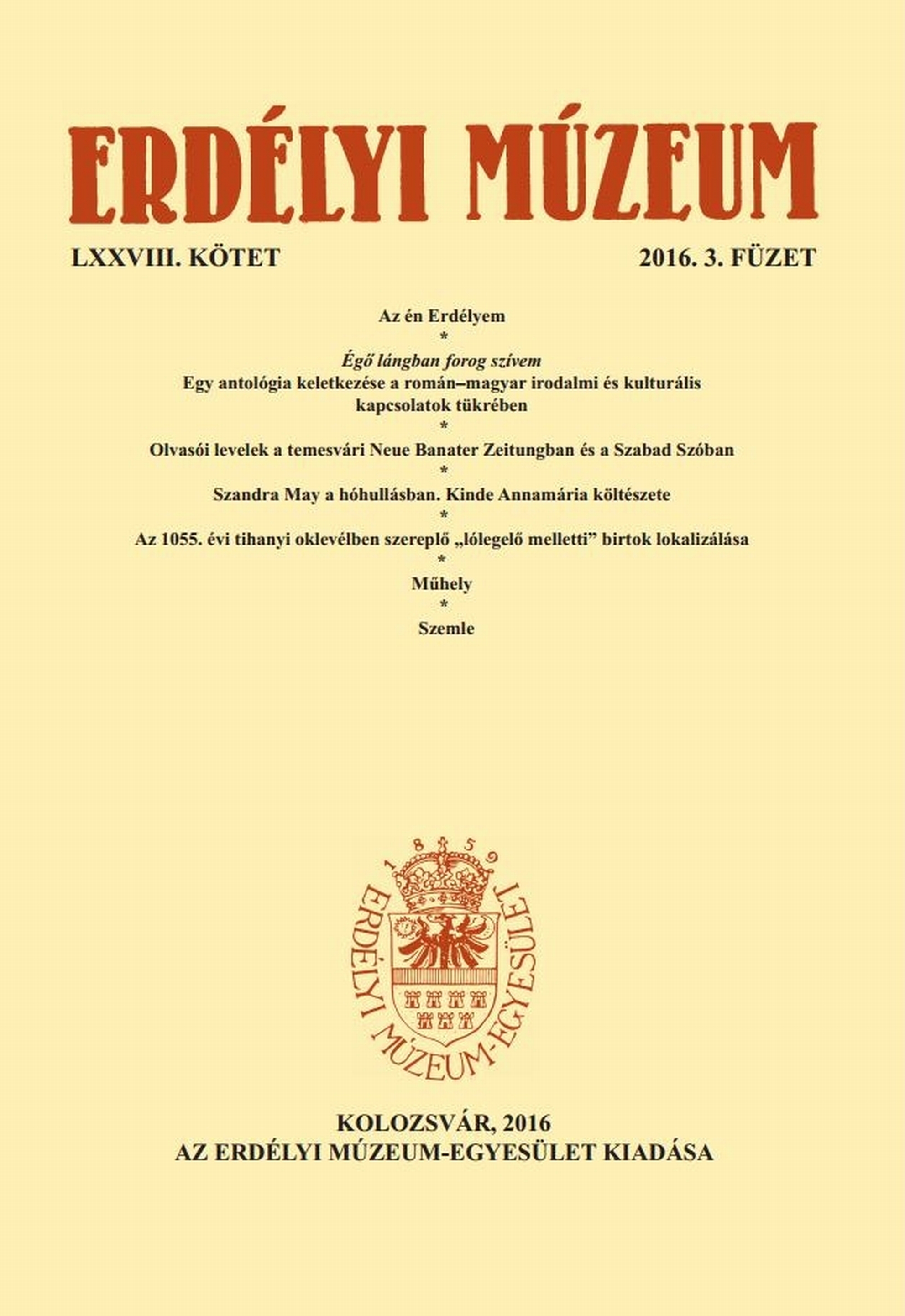Az 1055. évi tihanyi oklevélben szereplő „lólegelő melletti” birtok lokalizálása
Identifying the Location of the Real Estate „situated Next to a Horse Pasture” in the 1055 Tihany Charter
An Important „Newly Discovered” Source Regarding 11th Century Place-Names
Author(s): László HollerSubject(s): History, Language studies, Cultural history, Middle Ages
Published by: Erdélyi Múzeum-Egyesület
Keywords: Tihany-charter from 1055; place names in the 11th century; history of Tolna County; Hungarian language in the 11th century; Slavic language in the 11th century; Gesta Hungarorum
Summary/Abstract: The earliest preserved original diploma issued in Hungary dates from the year 1055; it details a number of real estates donated by King Andrew I. to the Tihany Abbey. In the description of the real estates’ borders a number of Hungarian words and phrases are contained, herein providing essential information on the status of the Hungarian language in the 11th century. However, in spite of the recognition of its significance and extensive study over two centuries, proper “decoding” of several words of the charter has yet to be done. The author is convinced that the proper interpretation of these special words appearing in the description of the estates in question would be furthered by identification of the actual location of the estates themselves. The author previously published two long localization studies regarding this diploma. In the present paper he focuses on one of the most important estates in question, from both linguistic and historical point of view. The author firmly rejects the localization proposal unanimously accepted by researchers in the last sixty years. He locates the estate in present day Tolna County with a high degree of certainty by identifying several former (or even present-day) settlement names mentioned within that particular section of the charter: Szakadát (1055: zakadat), Kölesd (1055: cuesti), Csernel (1055: serne/l/), Barbucs (1055: ba/r/bu/s/), Gyönk (1055: gun[c]). Concerning the undeciphered word “iohtucou” that appears in the description of the property’s borders, the author concludes that this is a transcription of the 11th century local pronunciation of a Slavic expression using Latin characters and its meaning is ‘high quality horse pasture’. According to the author, some additional words in the charter are most likely transcriptions of Slavic words as well. Based on the author’s proposed localization of the estate, he is able to present consistent interpretation for several, hitherto unexplained words and phrases in the Tihany charter from 1055.
Journal: Erdélyi Múzeum
- Issue Year: LXXVIII/2016
- Issue No: 3
- Page Range: 51-96
- Page Count: 46
- Language: Hungarian

